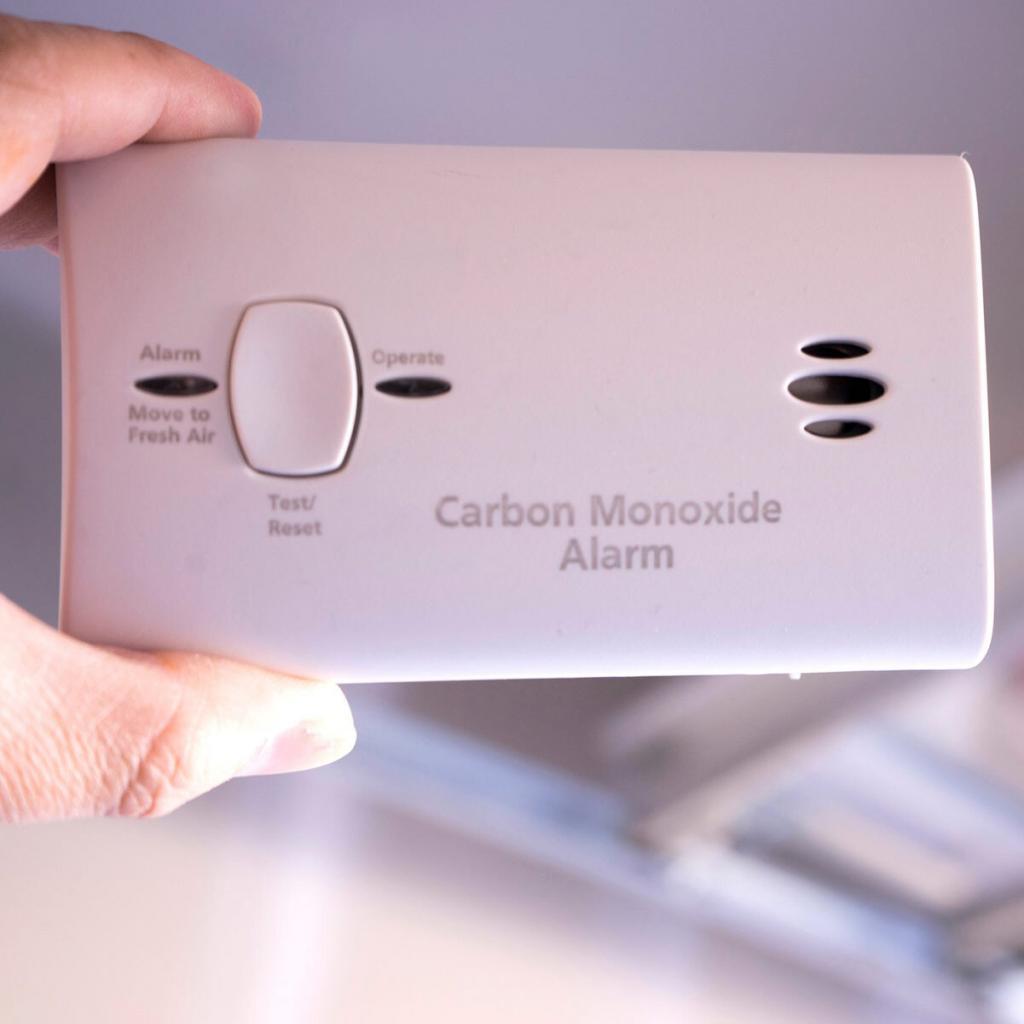During the winter season in St. Louis, our heating and furnace systems keep us warm and comfortable inside our homes. However, the risk of carbon monoxide leaks is more significant with the increased use.
Thomas Hoffmann Air Conditioning and Heating prioritizes your safety by offering comprehensive solutions to prevent carbon monoxide poisoning. Our HVAC team ensures that all heating systems are professionally installed and regularly maintained to minimize the risk of CO leaks.
We recommend installing carbon monoxide detectors in strategic locations within your home to provide an early warning in case of any potential issues. Call us today for HVAC repairs and maintenance.

What Is Carbon Monoxide?
Carbon monoxide is an odorless, colorless gas. It is highly toxic and is produced by incomplete combustion of fuels, including wood, coal, oil, charcoal, natural gas, and propane. When your water heater or furnace’s burner elements are malfunctioning or dirty, you are at an increased risk of carbon monoxide poisoning.
The most dangerous thing about carbon monoxide leaks is that they are difficult to detect; carbon monoxide cannot be smelled, seen, or sensed in any way. You will only know of a threat after you have started to feel symptoms. The symptoms of carbon monoxide vary depending on the level of exposure. Mild exposure causes flu-like symptoms:
- Fatigue
- Shortness of breath
- Dizziness
- Headache
- Nausea
Prolonged exposure to carbon monoxide can lead to various symptoms, ranging from mild to severe. Symptoms of exposure may include:
- Headache: One of the most common early symptoms is a persistent headache.
- Dizziness: Feeling lightheaded or dizzy can be a sign of CO poisoning.
- Nausea: Prolonged exposure may cause nausea and vomiting.
- Fatigue: Individuals may experience extreme tiredness or weakness.
- Shortness of Breath: Difficulty in breathing can occur with CO exposure.
- Confusion: Mental confusion and difficulty concentrating may be observed.
- Blurred Vision: Vision problems, such as blurred or double vision, can occur.
How Can I Prevent Carbon Monoxide Poisoning?
- Ensure all gas-burning appliances in your home, including the stove, furnace, and dryer, are installed according to building codes and the manufacturer’s instructions.
- Have all heating equipment inspected and maintained regularly.
- Do not install or use any equipment with a gasoline engine within a closed space.
- Do not leave a car running in the garage, even if it is well-ventilated.
- Some people use aluminum foil to cover the bottom of an oil or gas furnace. Avoid this because it can block airflow and produce carbon monoxide.
- Never use fuel-burning camping equipment inside a garage, vehicle, tent, or enclosed area. If you must use this equipment inside your home at any time, read the instructions and follow them correctly.
- Avoid burning charcoal within enclosed spaces.
Do You Need To Install a Carbon Monoxide Detector In Your Home?
A carbon monoxide detector and the above tips are the best prevention against carbon monoxide poisoning. A carbon monoxide detector alarm will sound off when carbon monoxide levels inside your home are abnormal. In addition, regular maintenance of your furnace will provide additional protection for the upcoming winter. Thomas Hoffmann Air Conditioning & Heating LLC, a St. Louis HVAC company with over 30 years of experience, can provide all your HVAC maintenance needs.
24/7 Service Call Now
At Thomas Hoffmann Air Conditioning & Heating, we pride ourselves on being a locally owned and operated HVAC company. With more than 30 years of experience and a master technician and mechanical engineer as our owner, we can replace, repair, and maintain your business or home’s HVAC system.
